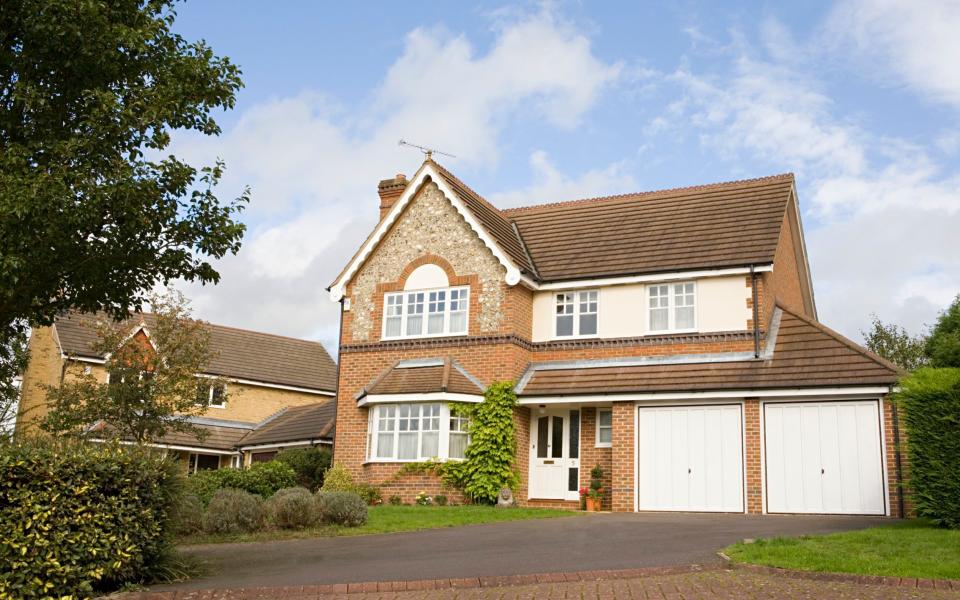While the middle classes may not be able to afford to go net zero, they’ve got little choice

A new net zero plan is upon us. The government has just published Powering Up Britain, 1000 pages of policy tweaks and clearer outlines to show, with improved precision, how the UK will meet its climate change targets. There will be increased investment in renewables and nuclear, with the aim of generating the cheapest electricity in Europe by 2035, and new carbon capture sites built to store CO2 under the North Sea. There will also be an insulation fund for 300,000 of the country's most poorly insulated homes.
However, it still stands that the Government is to ban all gas boiler installations by 2035. As of 2030, it will be illegal to buy a new petrol or diesel car. Mortgage companies are increasingly disinclined to lend against homes below the EPC (energy performance certificate) rating of C. And, according to current government-set targets, all 28 million UK homes need to be modified to reach net zero standard – that’s balancing greenhouse gas removal with greenhouse gas emissions – by 2050.
So are you looking at your two petrol cars, gas boiler, 20-year-old windows and badly fitted catflap and starting to panic?
You won’t be alone.

The pressure is undeniably on, and anyone who thinks they can just mail order a heat pump in December 2034 isn’t paying attention. The UK has some of the most poorly performing housing stock in Europe in terms of energy efficiency, and the average cost to remedy this situation is around £30,000 per home (with big margins either way depending on house size, age and general maintenance).
In an unholy tangle of the cost of living crisis, stagnant wages and falling house prices, it’s hard to see where any of this money will come from, and yet the deadlines are not going to loosen – quite the opposite, in fact. While the middle classes may not be able to afford to go net zero, really, they’ve got little choice.
“There’s an opportunity here for us all to start the work and access the finance, and we’ve got to take it,” says Lynne Sullivan, architect and founder of LSA Studios and chair of the newly launched advice service National Retrofit Hub.
“Because there’s no way the Government is going to give us all £20,000 to do our houses.” It’s a startling admission but she’s not wrong. We are all going to have to fund our own domestic decarbonisation, and the short-term expense (but potentially long-term gain) depends on precisely how deeply we wish to retrofit. So, want to know the average costs for a net zero home?
Read on and buckle up.
Step 1
“You have to sort out the fabric of your building first,” says Russell Smith, managing director of RetrofitWorks, a not-for-profit building design company. “If there’s any damp, or a leak, that needs to be fixed.” He explains that applying insulation on top of damp will simply trap the moisture, and the damage will only become obvious in 10 to 15 years when the structure of the whole building has been compromised: “It’ll be a big problem at that point.”
“A lot of people don’t know where to start to get their homes to net zero,” he goes on to explain. “I would recommend that you ask a consultant to produce a whole house plan. This means that an expert will look at the size of your home, the insulation levels and the efficiency of the systems within it. They’ll tell you what you need to do and, crucially, in what order.” The work will also be phased, so you can plan financially.

Step 2
“The cheapest energy is the energy you don’t use,” says Joanna O’Loan, knowledge manager for the Energy Saving Trust. “So, yes, the more insulation that you can put in, the better.” While we all know that laying insulation in the loft is a smart move (and can be completed at cost by a confident DIYer), there’s a more complex world of insulation out there – especially if you would like your brand new heat pump to work at capacity. “Everyone should do their loft and cavity walls, if they have them,” says O’Loan.
However, most walls that were built before 1920 will be solid, and if you are one of millions living in a Victorian semi or terrace, you are potentially losing 35-40 per cent of your heat through the walls. “Solid wall and floor insulation is expensive and, being realistic, a lot of people won’t be able to afford it,” says O’Loan. “Also, it can make your rooms smaller – it may add around six inches to the width of the wall.”
But crucially, if you can’t insulate your walls it doesn’t mean you can’t have a heat pump. “Underfloor heating is effective, as you’ve essentially turned your floor into a radiator – the large surface area means you can run at low temperatures and still have warm rooms. You might not want to lift flooring you’ve already laid to install underfloor heating and in this case larger radiators can work well too. Your installer will work with you to design the best system by performing the required heat loss calculations, based on their survey of your home.”

If you can insulate, however, you absolutely should. “Some people are going straight for heat pumps, and that will work; they’re designed to work in any building,” says Smith. “It’s just that when you’ve properly insulated, you’ll probably need a smaller heat pump, and it will be more effective and require less maintenance.”
Aside from walls, ceilings and floors, windows and doors also need to have a high energy rating (A-A++) and should be well sealed to exclude draughts. Ventilation, however, should not be forgotten because as we seal up our homes, condensation can occur. “I recommend having trickle vents in windows,” says Smith.
Step 3
“Most houses will need an air-source heat pump,” says Smith. “We can’t avoid this technology, it’s coming.” Paul Ciniglio, head of whole home retrofit at the National Energy Foundation, agrees: “The future of heating in this country is very much looking like it’s electric; heat pumps are the main player in town. We are a leader in offshore windfarms and the Government is decarbonising the grid, but as we all get electric cars and heat pumps, we need to reduce the peak demand. We have to insulate homes properly to be less reliant on heating.”

This is the one area where there is clear government help. “The Boiler Upgrade Scheme, or BUS, gives you £5,000 to change your boiler to an air-source heat pump. For an average three-bedroom house, it’s around £7,000-£15,000 to have one fitted,” says Ciniglio. “A ground-source heat pump is generally more efficient but costs around £25,000–£35,000, with a government subsidy of £6,000.” Heat pumps last longer than gas boilers – 20 to 25 years is the average lifespan.
Step 4
Not all homes are suitable for solar panels, but if you have sufficient south-facing space on your roof, they may be a no-brainer. They generate electricity all year round, but clearly do their best work between spring and autumn. “Solar panels make a decent contribution to powering household electrical appliances,” says Ciniglio.
“As electricity is so expensive at the moment, I recommend fitting a battery and storing as much of your own-generated electricity as possible. Solar is typically paying back within about 10 years now.” What solar panels are unlikely to do is power your heat pump all year round, which is why it’s sensible to reduce the need for heat, so you buy less expensive grid electricity.
“Banks are increasingly unlikely to lend on really energy inefficient properties,” says O’Loan.
“There are green mortgages where you can get money towards these improvements, assuming you achieve the desired EPC rating. It’s also worth speaking to your installer; some offer credit and ways to pay back over time.”

Step 5
After the recent petrol shortages and energy hikes, the benefit of electric cars has never been clearer – plus, by 2030, no new petrol or diesel cars can be sold in the UK. But are they affordable? “Our bestselling car is the Nissan Leaf. It’s around £20,000 for a used one and it does about 150 miles per charge,” says Martin Miller from EV Experts, a used electric car dealer in Surrey. “At entry level, we have an older Leaf for £8,500 that does 70 miles.”
But, what other costs does the consumer need to factor in?
“You’ve got to think about where you can charge your vehicle,” says Miller, “but over 60 per cent of houses in the UK have a driveway or garage, so that makes it easier. For a small car, you can charge off a three-pin plug and it would take about 12 hours – and that charger would cost £200 to buy. Or you could install a charging unit at home, and they are £1,200 fully fitted. Then it would take four hours at night, when it’s the greenest and cheapest time to charge.”
So while the upfront cost of the charging unit is certainly a sting (“the government grants and subsidies have all finished on that front,” says Miller), couple it with less expensive services, brilliant MOT pass rates, cheap warranties (“there are fewer components, so less can go wrong”) and eight-year warranties on the batteries, and it adds up to cheap(er) driving. Monthly finance packages are readily available too, just in case you haven’t got £22,000, along with that other £30,000 for your house, in your back pocket.

 Yahoo Finance
Yahoo Finance 